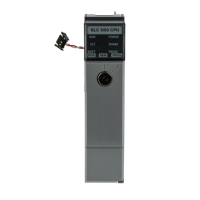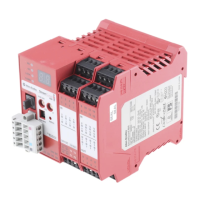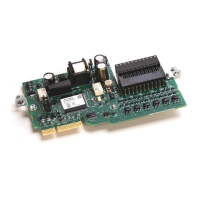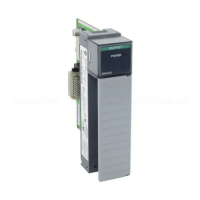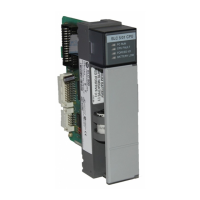Publication 1747-RM001G-EN-P - November 2008
SLC Communication Channels 13-77
For modern serial radio modems that support full-duplex data port buffering
and radio transmission collision avoidance, the DF1 Radio Modem driver can
be used to set up a masterless peer-to-peer radio network, where any node can
initiate communications to any other node at any time, as long as all of the
nodes are within radio range so that they receive each other’s transmissions.
DF1 Radio Modem also supports Store & Forward capability in order to
forward packets between nodes that are outside of radio range of each other.
Each node that is enabled for Store & Forward has a user-configured Store &
Forward Table to indicate which received packets it should re-broadcast, based
on the packet’s source and destination addresses.
A broadcast write command initiated by any DF1 radio modem node is
executed by all of the other DF1 radio modem nodes that receive it. No
acknowledgement or reply is returned.
DF1 Radio Modem System Limitations
The following questions need to be answered in order to determine if you can
implement the DF1 Radio Modem driver in your radio modem network:
• Are all of the devices SLC 5/03, 5/04, 5/05, MicroLogix 1100, 1200 or
1500 processors?
If so, the SLC processors must all be at FRN C/6 or higher in order to
be configured with the DF1 Radio Modem driver using RSLogix 500
version 5.50 or higher. The MicroLogix 1200 must be Series C, FRN 8
or higher and the MicroLogix 1500 must be Series C FRN 9 or higher.
The MicroLogix requires RSLogix 500 version 6.0 or higher to be
configured for DF1 Radio Modem. Once channel 0 of the SLC
processor is configured for DF1 Radio Modem, you will need to use
channel 1 to locally monitor and program your SLC processor using
RSLogix 500.
• Do the radio modems require RTS/CTS hardware handshaking?
If so, you need OS Series C, FRN 7 or higher, together with RSLogix
500 version 6.10 or higher.
• Do the radio modems handle full-duplex data port buffering and radio
transmission collision avoidance?
If so, then you can take full advantage of the peer-to-peer message
initiation capability in every node (for example, the ladder logic in any
node can trigger a MSG instruction to any other node at any time). If
not, then you may still be able to use the DF1 Radio Modem driver, but
only if you limit MSG instruction initiation to a single ‘master’ node.
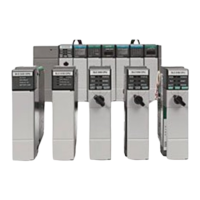
